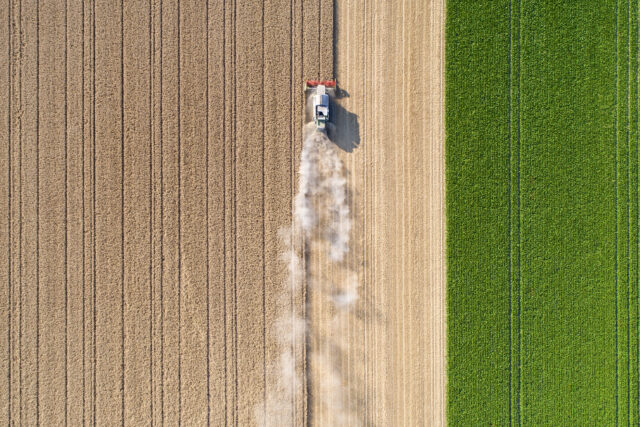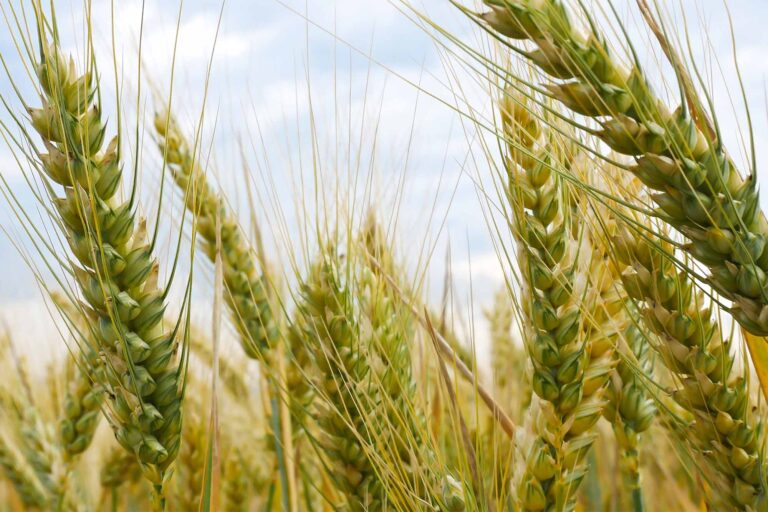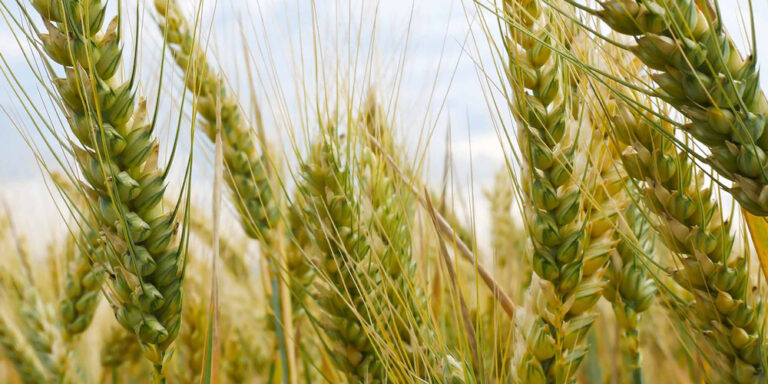Table of Contents
- Key Takeaways
- Introduction
- What Is the Potential for Water-Limited Crops in Today’s San Joaquin Valley?
- Understanding the Co-benefits of Water-Limited Cropping
- Expanding Opportunities for Water-Limited Farming in the San Joaquin Valley
- Supporting Transitions to Water-Limited Farming
- Notes and References
- Authors and Acknowledgments
- PPIC Board of Directors
- PPIC Water Policy Center Advisory Council
- Copyright
Key Takeaways
The rollout of California’s Sustainable Groundwater Management Act (SGMA) is altering the state’s agricultural landscape. As groundwater sustainability measures are implemented and water scarcity increases, at least half a million acres are projected to come out of irrigated production in the San Joaquin Valley, the state’s agricultural heartland. Rather than widespread land idling—which comes with unintended consequences such as dust, weeds, pests, and soil degradation—a switch from summer irrigated crops to winter crops produced with limited water (including winter cereals and forage crops, among others) might keep some of this land in production. Although water-limited agriculture faces large hurdles, some promising aspects warrant further exploration.
- Strictly dryland crops have limited scope in today’s San Joaquin Valley . . . Crops such as winter wheat grown using only precipitation to supply crop water requirements were once commonplace in the valley. Yet highly variable rainfall patterns and low overall water availability make dryland grain production risky; reliable harvests are likely only possible in the wetter northern parts of the valley.
- . . . but small amounts of irrigation can have a big impact on crop establishment. When precipitation can be supplemented by 4–8 inches of irrigation, models show that winter wheat establishment improves dramatically even in drier parts of the valley—and growers’ experience tends to align with this finding. Other crops may also be viable with supplemental irrigation, as long as irrigation systems are capable of delivering small volumes without undue expense.
- Forage makes better use of limited water than grain. Waiting until grain maturity to harvest a winter cereal crop may not be the best management strategy under water-limited conditions. Instead, early harvests of forage (e.g., hay or silage for livestock) may be a more profitable use of water and offer the flexibility to produce grain in good water years.
- Co-benefits from water-limited crops go beyond direct financial returns. Potential benefits from keeping crops in the ground include reduced dust pollution risk and better water infiltration and soil quality relative to idled land, with similar or only slightly more water consumption.
- Supportive policies could expand opportunities for water-limited cropping. These include state and federal programs to compensate growers for the public benefits created by water-limited crops, local groundwater budgets that account for the net water use from fallowing, and regional planning that considers water-limited crop management among the suite of alternatives available for lands transitioning out of irrigated production.
- Further work is needed to test water-limited cropping in the valley. Various research efforts would facilitate the development of water-limited cropping as an alternative to widespread land idling, including research to improve crop modeling for valley conditions, improve the performance of water-limited cropping systems, expand the portfolio of water-limited crops, understand key interactions such as salinity and weed pressure, and understand the market potential and price/cost thresholds for the economic viability of water-limited crops.
Introduction
In many parts of California, agricultural production has relied for decades on largely unregulated groundwater pumping. Groundwater overdraft in the San Joaquin Valley—the state’s largest farming region—has long been a problem. In response to the undesirable effects of overdraft such as dry wells, land subsidence, and declining drought reserves, California passed the landmark Sustainable Groundwater Management Act (SGMA) in 2014. SGMA requires local groundwater sustainability agencies (GSAs) to end groundwater overdraft by 2040, while addressing the associated undesirable effects.
As SGMA implementation unfolds, it will have extensive impacts on the San Joaquin Valley’s agricultural landscapes. While efforts are underway to augment water supplies—for instance by increasing groundwater recharge—bringing basins into balance is also likely to entail reductions in irrigated crop acreage. In an earlier study, PPIC researchers projected that at least 500,000 acres (>10% of the irrigated footprint in the valley) and up to 1 million acres will likely come out of irrigated production by 2040 to achieve the necessary level of demand reduction (Hanak et al. 2019).
Widespread land idling could result in significant losses for public health, environmental quality, and economic prosperity. Fallowing could have a considerable economic impact in this agriculturally focused region, including millions of dollars in lost crop revenues, blows to agriculture-adjacent industries such as packing and milling, and job losses (Medellín-Azuara, Escriva-Bou, and Jezdimirovic 2019). And while much depends on how fallowed lands are managed, threats from fugitive dust emissions, pests, and weeds could result if mitigating actions are not taken (Box 1). PPIC researchers and partners are investigating the potential for alternative land uses such as utility-scale solar energy development and habitat restoration (Ayres and Seymour 2022; Rosser and De Leon 2022; Hanak, Peterson, and Hart 2022). But it is also likely that significant acreage will not find its way into these uses and could simply become idle.
Keeping land in production with minimal irrigation. Water-limited cropping systems may be another helpful alternative to widespread idling. These systems could keep land in production with only a fraction of the applied water relative to a typical irrigated summer annual crop or perennial crop. Crops such as cereals, canola, beets, chickpeas, and leafy greens, among others, can be grown during California’s rainy winter season and require fewer inputs, less labor, and less land preparation than many fruit, vegetable, and tree or vine crops. In particular, cereals like wheat, oats, barley, and triticale can be harvested at various growth stages to best leverage changing market and weather conditions. And they are compatible with other beneficial management practices including grazing, conservation tillage, cover cropping, and residue management techniques, which can mitigate dust emissions, expand options for weed control, and maintain good soil structure for effective water infiltration. While winter crops are mostly grown in irrigated production systems in today’s San Joaquin Valley, many of the crops listed above are commonly grown as dryland crops in climatically similar regions across the world and could be suitable for California production systems that aim to minimize water inputs.
In this report, we use the term “water-limited agriculture” to encompass both strictly dryland cropping—or crops grown with only precipitation and stored soil water to supply crop water needs—and what we refer to as “dryland-plus,” or dryland crops that receive small amounts of irrigation to supplement rainfall. We focus primarily on cropping systems, but we will also discuss ways that grazing animals and livestock are linked to these systems. For example, rangelands may emerge as another alternative to fallowing, and we will examine the potential benefits—along with some caveats—of rangeland re-establishment and restoration later in this report.
About this report. In the following sections, we take a closer look at dryland and water-limited agriculture as possible alternatives to land fallowing in a San Joaquin Valley impacted by SGMA. Using winter wheat as a case study, we gauge the likelihood of successful water-limited production in the region considering climate and the option to apply small amounts of irrigation to aid crop establishment and growth. We also explore strategies for getting the most out of limited water by emphasizing forage production—rather than grain—as the primary objective. We then unpack the opportunities and uncertainties regarding the potential benefits of dryland and dryland-plus winter crops (relative to idle land) for water use, air quality, soil, weeds, habitat, and local and regional economies. Next, we explore alternatives to winter grains for water-limited agriculture, including rangeland and grazing systems, other winter crops, and novel crops and cropping systems. We close with a set of recommendations for priority research and policy directions that would facilitate the adoption of water-limited cropping as a land-use alternative available to growers and GSAs as they continue to roll out their plans to end groundwater overdraft in the coming years.
In preparing this report, we drew upon the valuable input of stakeholders who participated in several workshops and many one-on-one interviews and conversations. These stakeholders are involved in valley agriculture and water in many capacities; the group includes growers and ranchers; land managers; extension specialists and advisors; state, federal, and local agency staff; and researchers from California and elsewhere. We also used quantitative modeling tools and a review of the scientific literature on water-limited agriculture in California and comparable ecoregions to build on these discussions. Two technical appendices summarize potential economic scenarios for the feasibility of water-limited winter wheat (Appendix A) as well as scenarios for water-limited wheat forage yields across the valley under various assumptions about rainfall requirements (Appendix B). Detailed information on modeling and statistical approaches for our analysis can be found in a forthcoming peer-reviewed journal article, available from the authors upon request.
This report is part of a broader effort by the PPIC Water Policy Center and partners to understand how land transitions in the valley can best be managed, including a companion report on the cross-cutting impacts of land transitions on air quality (Ayres, Kwon, and Collins 2022). Further reports on the technical, economic, environmental, and institutional considerations for management will be released in coming months.
What Is the Potential for Water-Limited Crops in Today’s San Joaquin Valley?
Growing winter crops without irrigation can be a chancy business in many areas of the San Joaquin Valley. The more than 27,000 square miles that make up the region encompass a wide variety of climates and soil types. Precipitation is highly variable within seasons—and across space and years (Figure 1). The timing, intensity, and frequency of rains can make it difficult to establish and maintain an adequate crop stand with reliability. However, the ability to produce minimally irrigated crops in the valley may become an asset as groundwater sustainability measures are implemented.
In this section, we use winter wheat as a case study to explore the possible outcomes for non-irrigated production in the San Joaquin Valley, considering today’s climate conditions and the option of applying small amounts of irrigation to aid crop establishment and growth.
Rainfall varies widely across irrigated cropland in the valley, and is lowest in the south and west

SOURCES: Historical rainfall is from PRISM Gridded Climate Dataset (PRISM Climate Group 2014); irrigated cropland extent is from the California Department of Water Resources 2016 land use layer.
NOTES: Water years start on October 1 of the prior year, and run through September 30 of the named year. Locations shown are those used in the detailed crop modeling exercise (see Appendix B).
What Is Water-Limited Agriculture?
We use the term “water-limited agriculture” because we want to explore the scope not only for strictly dryland farming, but also for dryland farming with the option of applying small amounts of irrigation (“dryland-plus”). “Dryland farming” refers to crop production without irrigation, i.e., using only precipitation and stored soil water in regions that would otherwise be limited by water availability in at least one growing season per year. Dryland farming tends to occur in the world’s semi-arid and arid production regions: a common definition places the cutoff at areas that receive 20 inches or less of precipitation annually. Dryland farming is also characterized by water conservation techniques and minimal fertilizer and other inputs (Farooq and Siddique 2016). This distinguishes it from “rainfed farming” in more humid climates, where higher annual precipitation supports more reliable production, and both the management of excess water and water conservation can be concerns depending on the year (Stewart and Peterson 2015).
We use the term “dryland-plus” to refer to dryland crops that receive minimal supplemental irrigation to aid in crop establishment and to reduce the impacts of soil water deficit. “Minimal” in this case refers to irrigation depths of 4–8 inches, which is substantially less than typical irrigation amounts for fully irrigated summer crops. Importantly, water remains the primary yield-limiting factor for dryland-plus crops in our analysis. As such, dryland-plus typically still entails reduced yields relative to a fully irrigated scenario.
Water-Limited Agriculture in the San Joaquin Valley—Then and Now
Prior to the proliferation of irrigation projects starting in the late 19th and early 20th centuries, California agriculture revolved around hardy crops such as wheat and barley, which could be produced in the winter with few inputs other than rainfall (Luebs 1970). Dryland winter wheat and extensive livestock grazing operations were common on the San Joaquin Valley floor. With the Gold Rush came an increase in the demand for food, and by the mid-1880s wheat was harvested on 3 million acres, mostly on vast landholdings in the Central Valley (Pisani 1984; Geisseler and Horwath 2014). While dryland winter wheat was once common and profitable, it has declined across California over the last 100–130 years. Shifts in farm structure towards irrigated operations—and demand for the high-quality, high-yielding specialty crops that irrigation could support—have contributed to the downward trend.
In modern times, California continues to produce wheat, other small grains, and forage crops. Dryland production of these crops tends to occur in the more water-rich Sacramento Valley and in foothill regions that are not suitable for irrigated agriculture. In 2018, before the onset of the latest drought, winter wheat was grown for grain on roughly 200,000 acres in the Sacramento and San Joaquin Valleys (Figure 2), with 117,000 acres in the San Joaquin Valley alone. The majority of this wheat is irrigated, and most irrigated operations grow it as a secondary crop in rotation with a summer cash crop, such as tomatoes or corn. As a rotation crop, winter wheat is grown to improve soil structure and to suppress weeds, pests, and diseases that might affect the other crops in the rotation.
Winter wheat grain and other winter season crops have been declining in acreage across the Central Valley
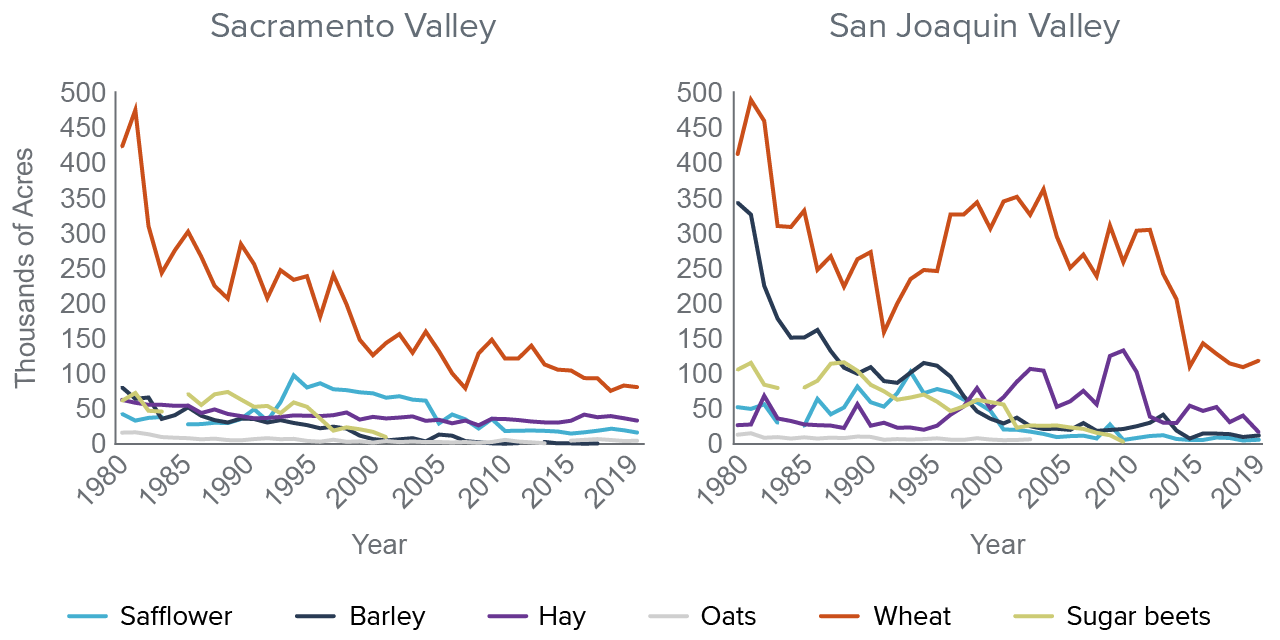
SOURCE: California County Agricultural Commissioners (2020).
NOTES: Crop acreage values in this dataset are reported by individual counties with occasional inconsistencies in crop type categorization, so this figure should be regarded as illustrative. “Wheat” refers to wheat produced for grain only, including durum and other varieties, and excludes seed crops and forage. Hay can include small grains, wild grass, and green chop, reported in dry weights. Although safflower is not widely grown as a winter crop in California, efforts are underway to assess its potential, particularly as a winter forage crop for dairies (German 2020).
Many people question whether strictly dryland cropping can work in the San Joaquin Valley today. California’s milder winters (relative to more northern dryland production regions such as Washington State) mean crops will mature more quickly, but dramatic swings in rainfall make dryland crop establishment risky. Average annual precipitation in the San Joaquin Valley over the past 10 years ranged from 12–15 inches in the north to as little as 5 inches in the south (Figure 1). And the valley’s climate is growing hotter, which may further restrict the suitable range for dryland winter crops over time by causing more water loss through evapotranspiration (ET, or the sum of water lost via evaporation from the soil and plant transpiration; Albano et al. 2022). Since the turn of the century, the valley has also been experiencing a lengthy dry spell, further reducing the volume and reliability of winter rainfall.
In our stakeholder workshops, growers and land managers working in the San Joaquin Valley (and particularly its more southern reaches) noted that establishing dryland crops is difficult and rarely succeeds, due in large part to the unreliability of early-season rain. In their experience, the timing and reliability of precipitation is of as much or greater importance than the overall quantity of precipitation in determining the likelihood of a successful dryland crop. Historical records tend to agree with this assessment: during the heyday of dryland wheat production in the valley, areas that received 15 inches of rain could expect a bumper crop, whereas areas receiving 10 inches or less had far less success (Pisani 1984). Adding to the difficulties, conditions favoring high ET—heat, low humidity, and wind—often expose young crops to water stress, which is compounded by low rainfall and stored soil moisture.
Despite similar climatic constraints, agricultural regions such as the interior Pacific Northwest of the US, southern Australia, and the Mediterranean maintain commercially viable dryland production (see Box 2 and Figure 3). To compensate for low soil moisture, growers in these regions often incorporate a long fallow of 12–16 months, which decreases the opportunity for productive output. Low margins are accommodated with massive scales of production and low overhead—conditions that are difficult to attain in the relatively fragmented, high-cost production environment of the San Joaquin Valley.
An undercutter tillage implement used for dryland wheat production in Washington State (left); a dual-purpose grazing operation in southwestern Australia (right)
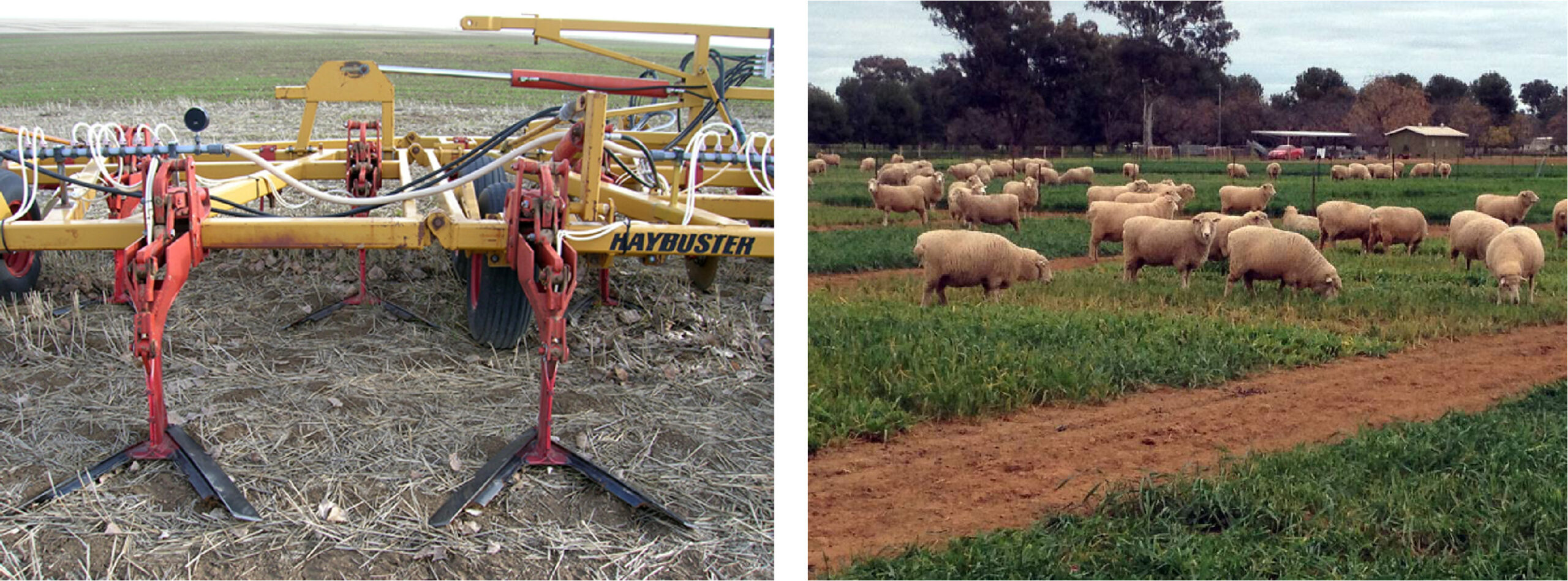
SOURCES: H. Schafer, Washington Association of Wheat Growers (left); H. Kennedy (right).
In general, the regions where dryland agriculture is currently practiced in the San Joaquin Valley either receive more—and more reliable—rainfall than the rest of the valley or lack the option for irrigation because they do not have access to surface water or usable groundwater supplies. Westlands Water District in western Fresno and Kings Counties, for example, has acquired thousands of acres of drainage-impaired or salt-affected farmland from private landowners within the district and neighboring districts (WWD 2013). It now manages some of these acres with dryland farming, but the extent has been declining due to poor outcomes and an inability to acquire crop insurance.
There are some places in the southern reaches of the valley where winter crops may never be possible without significant irrigation. However, in many areas, a few inches of water may be enough to enable water-limited production—especially for forage, rather than grain—on a larger scale. In the context of SGMA and farmland idling for groundwater demand reduction, water-limited cropping systems may warrant further consideration.
Modeling the Potential for Water-Limited Cropping: the Case of Winter Wheat
Because water-limited cropping is rarely practiced in today’s San Joaquin Valley, evidence of its potential is scant. To provide some preliminary insights, we employed crop modeling tools to examine the potential suitability of winter wheat as a dryland or dryland-plus crop across the San Joaquin Valley. We used the Agricultural Production Systems sIMulator (APSIM) (Holzworth et al. 2014) to model winter wheat performance at four sites representing a range of soil types and rainfall averages in the San Joaquin Valley. We then used the modeled relationship between biomass productivity and water inputs to extrapolate these results valley-wide, focusing on differences in average annual rainfall as the driving factor behind dryland and dryland-plus cropping success.
Why wheat?
We chose winter wheat as a model crop because it is familiar in California, has historical precedent as a dryland crop in the San Joaquin Valley, is currently grown as an irrigated winter crop, and is well-documented and well-validated in terms of model development. Winter wheat also possesses similarities to other cool-season crops such as triticale, barley, oats, and rye, as well as grass hay species such as orchard grass and fescue—all crops for which model development is not as advanced. Our findings may also translate to other cool-season crops often grown in water-limited settings, including both those familiar in California (barley, sugar beets) and less familiar (canola, chickpea, and field pea, among others).
This analysis should be viewed as a first step in gauging the potential for water-limited cropping as valley growers adapt to SGMA. Further work could reduce the uncertainty inherent in our modeling tools and explore the potential for other crops that may be equally or better suited for water-limited production here, especially when small amounts of irrigation are available. We discuss the need for further modeling work for these species at the end of this report.
A few inches of irrigation make a big difference for dryland crop survival
At our four modeled sites—Turlock (Stanislaus County), Visalia (Tulare County), the West Side Research and Extension Center (western Fresno County), and the Shafter Research Station (Kern County)—average annual rainfall ranged from a high of 12 inches (Turlock) to a low of 6 inches (Shafter). (See Figure 1 for site locations.) Visalia receives slightly less rainfall than Turlock (9 inches) and is slightly warmer, and both have similar medium-textured soils. The West Side site has similar average annual rainfall and temperature to Shafter, but it has a heavier clay loam soil, while Shafter has a coarse, sandy loam.
We considered several scenarios for irrigation and planting date. For irrigation, we considered: dryland (no irrigation), dryland plus 4 inches of irrigation, and dryland plus 8 inches of irrigation. For comparison, a typical irrigated winter wheat crop will receive 10–15 inches of irrigation in a season, depending on climate, soil type, and efficiency of the irrigation system, so 4–8 inches is significantly less than normal. Dryland-plus-4 represented one irrigation application, and dryland-plus-8 represented two applications. The timing of applications was determined by soil water status, which was reset at the beginning of each season. It is important to note that applying less than 4 inches with the low-efficiency flood systems that are commonly used for winter wheat might not be feasible in practice, and some systems could even have difficulty applying less than 8 inches in a single irrigation event. For planting dates, we considered early (mid-October), average (mid-November), and late (mid-December) options.
Finally, we considered a few different possibilities for what constitutes a “successful” water-limited winter wheat crop. A fully irrigated crop is typically managed with the objective of bringing the crop to maturity for a grain harvest, after which the stubble can be baled as straw. But we also considered scenarios for biomass products, such as forages harvested when the wheat has reached boot (a late vegetative stage) or soft dough (a stage after flowering but prior to full grain maturity). Boot and soft dough wheat forages can be marketed as green chop (cuttings fed to livestock when fresh), hay, or high-nutrition silage, among other products.
A water-limited crop could also be planted merely as ground cover. In light of the multiple objectives for transitioning farmland (e.g., protection of soils and prevention of dust), lower productivity and non-harvestable products such as cover crops might still carry value as an alternative to fallow. We discuss winter cover crops in the water-limited context in more detail later in this report.
A few key takeaways emerge from our simulations of winter wheat at different sites and with different irrigation amounts and planting dates:
- Dryland (no irrigation) scenarios result in a high probability of crop failure. At the wetter Visalia and Turlock sites, strictly dryland winter wheat could be established in most years, but often with low forage and grain yields: less than two US tons of dry matter per acre and less than one ton of grain per acre. At the drier West Side and Shafter sites, dryland winter wheat failed to survive to a harvestable stage in 40–65 percent of years.
- Dryland-plus scenarios dramatically improve crop survival. Crop survival was 100 percent at all four sites with 4 inches of irrigation applied at times of critical soil water deficit. Biomass and grain yields also improved, especially at the wetter sites: average biomass yields were 6.5 tons per acre, and average grain yields were 2.2 tons per acre. With 8 inches of irrigation, average grain and biomass yields improved even more, especially at the drier sites (see Appendix A, Table A1 for details by site).
- Early planting benefits dryland-plus winter wheat the most. When irrigation is unavailable, crop survival is improved by later planting (e.g., in December), in the heart of the rainy season. However, this increased reliability comes at the expense of forage and grain yield, as the shorter growing season allows less time for the crop to accumulate biomass before flowering. In contrast, for dryland-plus crops the best strategy shifts towards earlier planting (e.g., in October). The addition of 4–8 inches of irrigation helps to prevent early crop failure due to lack of rainfall, while yields improve due to the longer growing season, better coincidence of rainfall and crop water demand compared to later planting, and avoidance of high heat stress at critical growth stages.
Harvesting for forage could make the most of available water
Grower decision-making emphasizes overall profitability to maintain a viable farm business. And when water is a relatively scarce resource—as it is in the valley—management decisions must take into account the opportunity cost of irrigation water use. The economic assumptions underlying farm water management are complex, and include assessing whether a limited quantity of water might be better used on fewer acres to produce a crop with more profit potential, or stretched out over more acres on a less-intensively irrigated crop. Knowing more about incremental gains in profit potential from water applied to dryland and dryland-plus crops can help growers understand when to plant and harvest dryland or dryland-plus crops, whether it makes sense to plant at all, and what complementary investments might be necessary.
We explored these questions for wheat harvested as a late-stage forage product and as grain. For pricing considerations, we focus below on forage marketed as hay, but in reality wheat could also be marketed as wet forage products such as silage or green chop. In general, wet forages would need to be produced close to dairy and cattle operations, as their relatively high moisture content makes them heavier and more costly to transport. Our models for winter wheat indicate that:
- Profit potential is higher for hay than for grain. Harvesting dryland-plus wheat for hay rather than grain tended to result in positive net returns on operating costs across all four sites under a variety of cost and commodity price assumptions (see Appendix A for details). In some cases, these returns appeared high enough to clear a profit—although this would be more likely where overhead costs are low. For grain, positive returns only occurred in a much more limited set of circumstances: in the wetter locations, with high grain prices and/or low costs. Without irrigation, forage also performed better than grain—with yields high enough to cover operating costs in the wetter sites. But net returns were considerably more favorable with 4–8 inches of irrigation, even when water costs were high.
- Crop yield per unit of water is higher for dryland-plus forage when planted early. When no irrigation was available, later planting enabled higher forage yields and, therefore, more harvested product per inch of total water (irrigation plus rainfall). However, 4–8 inches of irrigation allowed for better crop water productivity than the dryland scenario regardless of planting date. The best outcome for crop water productivity was achieved with 4–8 inches of irrigation and early (mid-October) planting.
With some irrigation, forage production is possible across a larger area
Building on our finding that late-stage forage harvests appeared to make the best use of limited water, we wanted to determine the feasibility of water-limited forage production beyond our four model sites. To do this, we characterized late-stage forage yield potential as a function of seasonal water available to the crop. We found that our simulated forage yields tended to plateau at approximately 7.5 tons of dry matter per acre, meaning that yields did not continue to increase beyond this level even with additional water input. We therefore considered this the maximum forage production potential across our scenarios, although yields started to plateau sooner for the 4-inch (7.4 tons/acre) and dryland (6.1 tons/acre) scenarios. Additionally, we considered a scenario for 5-ton yields, which we estimated would result in positive net operating returns across a range of cost and price assumptions (excluding overhead; see Appendix A for details on commodity price and production cost assumptions).
Then, using the relationship between rainfall and forage yield, we calculated the probability that a given year and location would receive enough rainfall to achieve either the maximum, 5-ton, or 4-ton forage yields under the different irrigation scenarios (Figure 4). See Appendix B for details on these estimates and comparable maps for 4-ton yields.
A few conclusions stand out from this exercise:
- Without irrigation, few areas in the San Joaquin Valley can achieve 5-ton forage yields. About 5 percent of valley cropland (231,000 acres) could reliably hit 4-ton forage yields without irrigation, and only in the most northern (and relatively water-rich) areas of the valley. Less than 1 percent of cropland (13,000 acres) could hit 5-ton forage yields, and nowhere in the valley could consistently achieve the maximum dryland yield of 6.1 tons/acre.
- Possible cropping area increases with 4–8 inches of irrigation. With a single irrigation of 4 inches, the area that could consistently produce 4 tons of forage increased to 30 percent of valley cropland (1.4 million acres) and the area that could produce 5 tons of forage increased to 15 percent (700,000 acres). The odds of successful forage harvests increased further with 8 inches of irrigation applied across two irrigation events during a season. In this scenario, 72 percent of cropland (3.4 million acres) received enough rainfall to achieve the 4-ton yield in all years and 41 percent (1.9 million acres) received enough rainfall to achieve the 5-ton forage yield. However, maximum forage yields of 7.4 tons were unattainable in the dryland-plus-4 inch scenario, and 8 inches only allowed for maximum yields to be achieved on approximately 9,000 acres (<1 percent of cropland). This reinforces the point that crop yields in these scenarios are limited by water availability, even with the addition of small, targeted irrigations.
Probability of simulated forage yields across the San Joaquin Valley
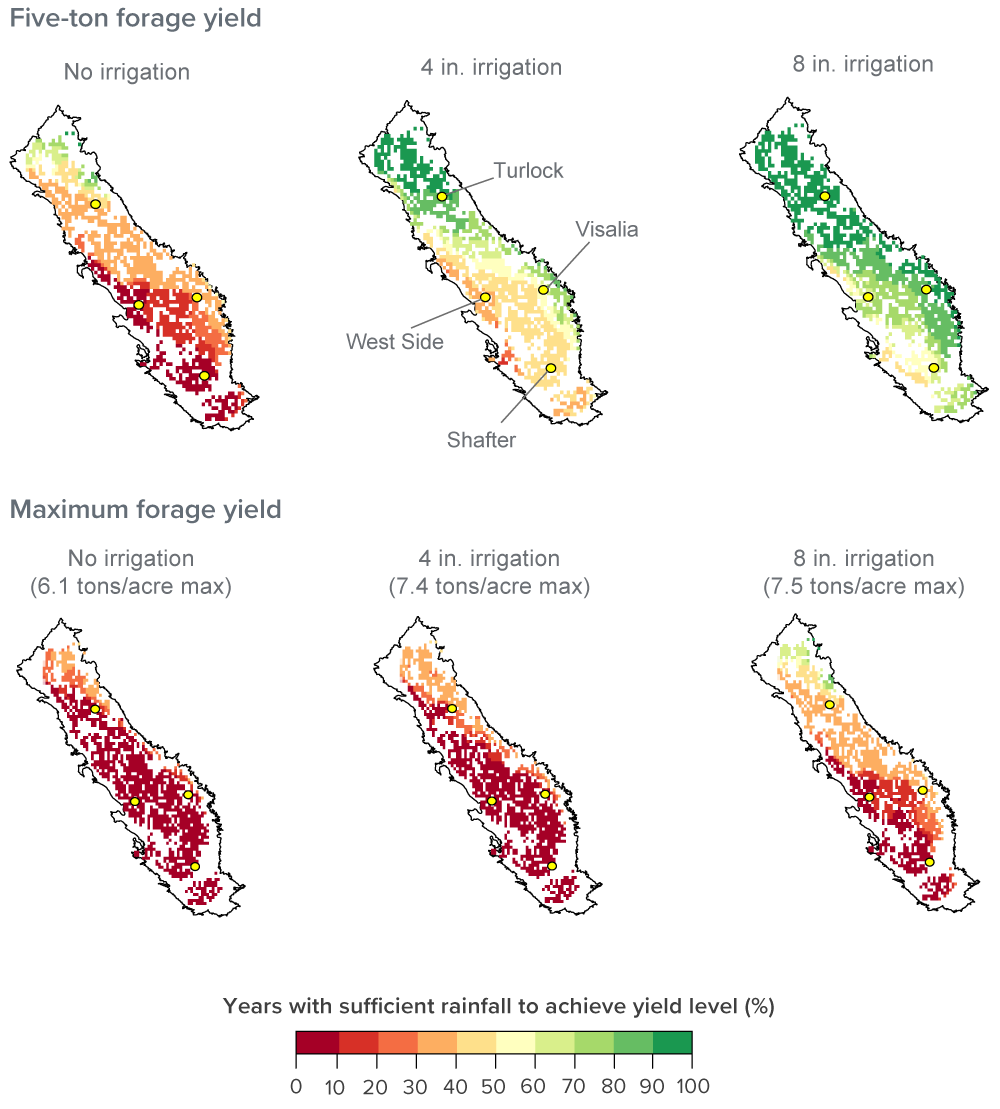
SOURCES: Historical precipitation data are from PRISM gridded climate data (PRISM Climate Group 2014). Irrigated cropland extent is from the California Department of Water Resources 2016 land use layer. See Appendix B for details.
NOTES: The spatial extent represents current irrigated cropland in the San Joaquin Valley. Dots indicate the location of the four sites used in simulations to determine potential productivity levels. Maximum forage yield is 6.1–7.5 tons per acre of dry matter depending on the irrigation scenario, calculated based on rainfall thresholds developed from a quadratic plateau function for the three irrigation scenarios (see Appendix B). Maps represent the application of these rainfall thresholds to individual site-year combinations across 10 seasons (2011–20). A 5-ton forage yield resulted in positive net returns under a range of price/cost assumptions (see Appendix A). Appendix B also shows comparable maps with 4-ton forage yields, which resulted in positive net returns under some price/cost assumptions.
While the maps in Figure 4 present average outcomes, the proportion of cropland that can reliably achieve a 5-ton forage yield is sensitive to different thresholds for the amount of total water required to achieve a certain yield level. This is due to the underlying variability of modeled yields across sites, meaning an inch or two of precipitation can make a large difference. To explore the high and low end of water requirements based on statistical methods, scenarios presenting the various outcomes that would result with more pessimistic or more optimistic rainfall thresholds are available in Appendix B, along with a brief overview of our methodology for producing these results. The detailed methodology can be found in a forthcoming peer-reviewed journal article, currently available from the authors upon request.
What Would it Take to Improve the Potential of Water-Limited Forage Production?
We have demonstrated that small, strategic amounts of irrigation could increase the viability of water-limited winter wheat across a broader swath of the San Joaquin Valley compared to dryland cropping, particularly when crops are harvested for late-stage forage rather than grain. Supplemental irrigation was also more effective than delaying planting in terms of improving both crop establishment and yields.
The most appropriate places for water-limited agriculture will likely represent only a subset of the cropped acreage visualized in Figure 4. At the valley level, it may come into play in areas where higher-profit-potential alternatives such as solar are infeasible. The scope for these cropping systems will also depend on how freely water can be traded across basins, which will in turn influence where land is likely to be idled; we will explore these questions in more detail in a forthcoming PPIC report (Escriva-Bou et al. forthcoming). And as shown by our models, northern areas of the valley with relatively more rainfall are more likely to have success with water-limited crops. The whole valley may be more constrained in the future than indicated by our models due to increasing temperatures and a “thirstier” atmosphere, which means that water will not go as far as it once did.
Finally, our models for water-limited winter wheat were based on biophysical relationships between soil type, climate, and crop physiology. But farm operations, institutional structures, and other economic considerations will also affect the feasibility of water-limited systems, and these need further work to understand fully.
Farm operations and irrigation systems
As with any management-based cropping system adaptation, water-limited cropping—and particularly the strategy we have termed dryland-plus—must be balanced with the operational difficulties it presents at the farm level. While small volumes of water may increase the chances for successful crop establishment, existing irrigation systems may not be designed to deliver small quantities. Furthermore, the cost of labor and expenses related to the maintenance of pumps, lines, and other irrigation equipment may outweigh the potential benefit of a harvest. This is especially true where growers also have the assurance that their water can be banked or traded if it is not used, which would decrease their incentive to use it on a crop with relatively low profit potential.
It also bears noting that our simulations assumed that irrigation water quality—particularly with regard to concentrations of salts, boron, and other trace elements—is not a major limitation on crop yield. In reality, many parts of the valley may be constrained in their ability not only to deliver small quantities of irrigation water, but also to manage its quality and prevent salt accumulation in soils without enough water for periodic salt leaching operations. Salt accumulation in soils would likely limit crop response to small amounts of irrigation water and further constrain yields.
Market considerations
One advantage of water-limited cropping systems, especially those revolving around winter cereals such as wheat, is their flexibility to be marketed either as grain or forage. While our models suggest that forage-stage harvests result in higher net returns per unit of water input, water will not be limiting in every year in some locations. Cereal crops give producers the option to adjust their management plan according to the conditions of the moment, including opting to produce grain in favorable rainfall years. This agility may become a key element of resilience to volatile climate conditions in agriculture moving forward.
More broadly, there are uncertainties around whether a large-scale expansion of winter wheat or other forage crops would find a market. California’s large beef and dairy industries might provide a source of steady demand. Granted, herd nutrition requirements would need to be taken into account if the proportion of cereal hay and forage in the diet were increased, but novel feed ratios and ingredients (such as almond hulls) are regularly incorporated into livestock rations. Water-intensive forages such as alfalfa and irrigated pasture are likely to continue to decline as water scarcity grows in the San Joaquin Valley (Medellín-Azuara et al. 2022). During droughts, livestock producers turn to culling herds and shipping more animals out of state due to lower availability (and higher cost) of pasture, hay, and silage (Sumner 2020; Sumner et al. 2021). Forages such as winter wheat, grown in a water-limited system, could potentially fill the gap left by declining alfalfa acreage while reducing the need for dairies to cull herds or truck in hay from out of state.
Other considerations for growers’ bottom lines
Our analysis of costs and returns suggests that while water-limited winter wheat could be financially viable for growers under some circumstances, these systems are not likely to compete with irrigated agriculture strictly on the basis of profit potential per acre of land. However, under SGMA it may be a case of “something is better than nothing.” For example, winter production could keep land operational and allow growers to quickly capitalize on summer irrigated production when water conditions allow. Some producers may opt for the flexibility of winter annual crops to avoid the risk of extended drought and loss of investment that can impact perennial crops, or simply plant a water-limited winter crop to avoid idling land while reserving the majority of their available water for trees, vines, and vegetable crops.
We found that under some price and cost scenarios, supplemental irrigation of water-limited wheat can be a relatively high-value use of water—generating as much or more in net returns per acre-foot than many other valley crops (see Appendix A for details). And if GSAs’ groundwater allocation policies restrict native groundwater from being traded or transferred, water-limited cropping may represent the highest-value use for available water on transitioning lands. In many basins, 4–8 inches could fall within native groundwater allocations. This water will generally need to remain within the basin, and GSAs are beginning to determine the extent to which it can be traded locally. Where water-limited cropping systems can produce harvestable quantities of forage, they potentially offer a valuable use for water that cannot be used, traded, or banked elsewhere.
Tax structures can also play a role in decision making for lands likely to go fallow, though the net result of land transitions in terms of property taxes is uncertain. Some county governments have expressed concern about the decline in local tax revenues that will occur when land values fall on lands transitioning out of highly productive agriculture. However, lower property taxes may offer more compatibility for water-limited agricultural use from the land manager’s point of view by reducing overhead costs. Landowners whose parcels fall under the Williamson Act—a program that provides property tax reductions for enrolled agricultural lands—may find additional incentive to keep their lands under agricultural production, even if water-limited, in order to continue receiving the associated tax benefits. On the other hand, landowners may face steep fees for withdrawing from Williamson Act contracts in the event they are unwilling to take on the risk of farming without irrigation.
Crop insurance programs are another consideration with public policy implications. Stakeholders reported that federal crop insurance coverage is no longer available for strictly dryland crops in areas like the west side of the valley, because of the high failure rates. Similarly, forage crops cannot be insured if they are grazed at any point, which reduces the benefit of flexibility offered by winter cereals. This means that growers must bear the full risk of a dryland crop, further diminishing their business appeal. Dryland-plus cropping might be more insurable, which would reduce risks for the grower and make room for more experimentation with water-limited cropping on transitioning lands. But uncertainties remain on this front.
What is clear is that in any water-limited context, growers will need to make financial decisions based on yield expectations, costs of production including overhead, and opportunity costs for irrigation water, among other considerations. These factors will determine the economic viability of water-limited crops and whether they fit into growers’ overall management system.
Finally, even though profit potential varies, water-limited systems could offer a way to recover at least some costs on land that would otherwise be idle or need to be managed via tillage. As we will now discuss, they could do this while mitigating some of the other downsides of idled land by protecting soils, reducing dust, and improving water infiltration.
Understanding the Co-benefits of Water-Limited Cropping
In the previous section, we focused on establishing the climatic and agronomic boundaries for water-limited cropping in the San Joaquin Valley. We also considered factors that could determine profitability of water-limited wheat. Now, we turn our attention to the range of other benefits that this system might provide relative to idle and fallow land (Table 1). As noted above, if returns from water-limited crops are not enough to cover costs, then other incentives may be necessary to ensure their financial viability for growers. A range of co-benefits from winter crops may be able to provide some of that incentive if they have demonstrable public or private value.
Dryland and dryland-plus forage could offer advantages over idle land and tilled fallow in several benefit categories
Land use options: better (↑), worse (↓) or similar (↔) to idled land?
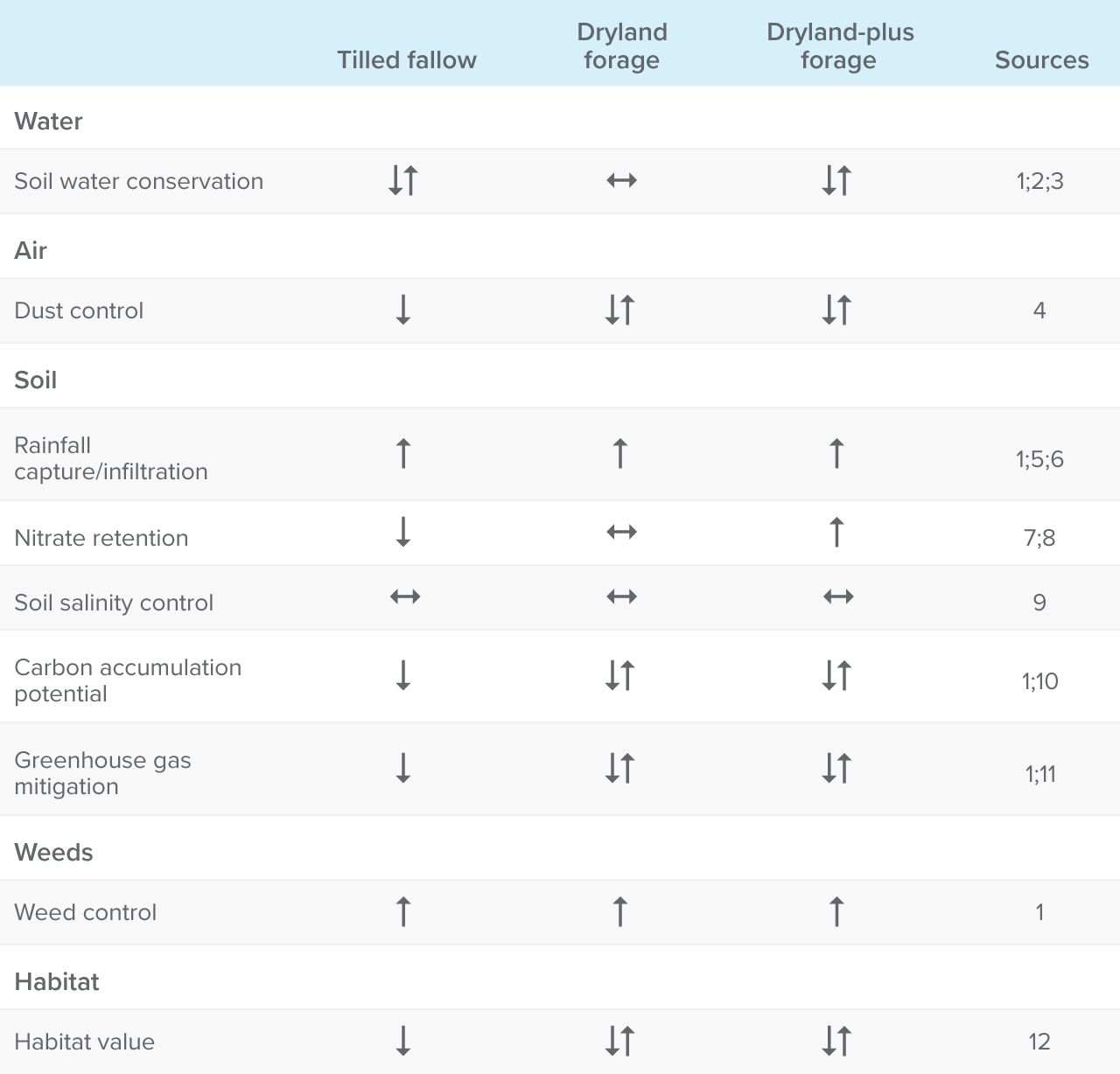
SOURCES: 1-author estimates; 2-DeVincentis et al. (2022); 3-Sharratt and Schillinger (2018); 4-Gaffney and Yu (2003); 5-Arrúe et al. (2019); 6-Basche and DeLonge (2019); 7-Dzurella et al. (2015); 8-John et al. (2017); 9-Scudiero et al. (2016); 10-Tautges et al. (2019); 11-Paustian et al. (2017); 12-Peterson, Marvinney, and Dybala (2020)
NOTES: “↑” indicates better, “↓” indicates worse, and “↔” indicates neutral relative to idled land. Scenarios where outcomes could differ depending on management practices and underlying conditions (e.g., salinity control), are indicated by “↑↓.” Soil water conservation refers to the ability of the system to minimize water lost via evaporation and/or transpiration. Net greenhouse gas balance was estimated by COMET-Farm (Paustian et al. 2017) and refers to carbon equivalents from soil carbon, carbon dioxide, nitrous oxide, and methane emissions.
Soil Water Conservation
What is the net water use on a winter-cropped parcel relative to leaving that parcel fallowed in the winter? This is an important question for planners and local GSA managers attempting to establish realistic groundwater budgets for their districts. They need to know the true water costs of fallow compared to dryland or dryland-plus uses to understand the tradeoffs relevant to managing lands coming out of irrigated cropping. Changes in water balance can be driven by different inputs or losses. While it is commonly assumed that fallow fields do not use water, they can lose just as much water via evaporation from the soil as a dryland crop—and with less opportunity to generate co-benefits. Similarly, although winter crops use water, they also improve the ability of soil to capture water inputs, as we discuss below.
Fallows have been shown to be highly inefficient at storing received water, with as little as 10 to 15 percent of rainfall remaining in the soil at the end of the fallow period. During the winter rainy season, both fallowed and cropped land lose water, measured as ET. While fallow land loses most of this water via evaporation from the soil, cropped land loses relatively more via transpiration, in part because the surface shading created by the crop reduces evaporation from the soil.
Our simulations showed that strictly dryland winter wheat harvested as a soft dough forage used roughly the same amount of water (measured as ET) on average during the growing season as a tilled fallow would lose via evaporation from the soil alone (Figure 5). This was especially true at drier sites (such as Shafter), where both soil evaporation and crop ET were limited by the low water availability. And although the dryland crop ET may be a fraction more than fallow soil evaporation in a given year, both the fallow and the crop use less water than the volume of rainfall, meaning they could result in a net positive water balance.
When irrigation is added, the equation becomes more complicated. Water-rich areas like Turlock are more likely to see net water conservation benefits from a dryland-plus crop. At drier sites like Shafter, where the crop otherwise would be severely water-limited, crop ET tends to increase in proportion to the amount of irrigation added, up to the point that crop water requirements are met—around 16 inches for a typical soft dough wheat forage (UC ANR 2006). This means that a dryland-plus winter wheat forage at a low-rainfall site would likely be a net water user in comparison to a tilled fallow. In contrast, at the more water-rich sites the applied irrigation water helps avoid water stress during critical early-growth periods, but much of it is in excess of crop needs and so represents a net addition to the water budget. Because of the higher overall water availability, a dryland-plus crop at a high rainfall site like Turlock may use more water than a bare fallow, but still result in net gains to the water balance.
Water use (evapotranspiration) by a dryland wheat crop relative to a tilled fallow
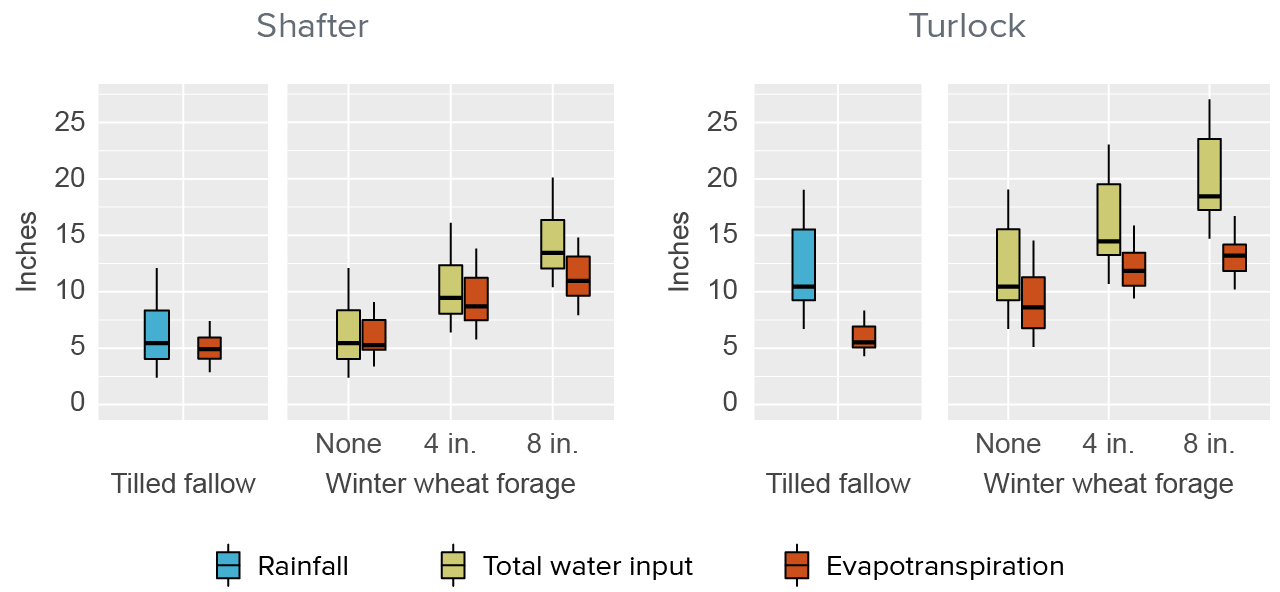
SOURCE: Author estimates from a 20-year model simulation of crop production and water balance at Shafter and Turlock.
NOTES: Shafter represents the driest (6 inches average annual rainfall) and Turlock represents the wettest (12 inches average annual precipitation) of the four modeled sites. “Total water input” represents water supplied from both rainfall and irrigation. In the tilled fallow scenario, evapotranspiration is mostly evaporation from soil, whereas in the winter wheat forage scenario, evapotranspiration accounts for evaporation and transpiration from the crop. The vertical boxes represent the range between the 25th and 75th percentile of the data; the upper “whiskers” (vertical lines) represent the range from the 75th percentile to the maximum value, while the lower whiskers are the range from the 25th percentile to the minimum value; the horizontal line within the boxes represents the median value.
It is important to note that these model simulations are only intended to provide an initial estimate of net water balance; field measurements under a range of conditions would be required to increase the certainty of these results. For instance, a short-term positive soil water balance may not result in long-term storage in many areas of the valley, regardless of soil cover or crop status, because most rainstorms are fairly light. Our simulations estimated that 75 to 80 percent of rainstorms brought less than 0.2 inches of rain at the drier Shafter and West Side model sites, and about 65 percent of storms brought less than 0.2 inches at the wetter Turlock and Visalia sites. Light rainstorms offer little opportunity for storage or deep percolation because the rainfall tends to evaporate from the top few inches of the soil in a matter of days. The net effect on total soil water storage is minimal unless rainstorms are big enough to deliver several inches of water at a time.
The majority of ET for both fallow and winter-cropped parcels occurs during the cool, wet winter growing season. This may seem counterintuitive, given that heat, dryness, and wind—generally more intense in the summer—promote evaporation. Cumulative ET for an irrigated summer crop can approach several feet of water for this reason. But because there is little to no rainfall during the summer in California, soils that aren’t irrigated can become so dry that little additional evaporation occurs.
Any water that does remain in the soil after the rainy season can be lost in the summer, either through soil evaporation or through plant transpiration if weeds are left unmanaged. One benefit of water-limited winter wheat and many other winter crops is their compatibility with residue management techniques—for example, retaining crop stubble in the field after a harvest to serve as a mulch. Such practices have been shown to mitigate water losses through evaporation during summer fallows (Williams, Long, and Reardon 2020; Wuest 2018; Stewart and Peterson 2015). In this sense, the net water outcome for winter water-limited cropping relative to bare fallow (whether tilled or sprayed) rests on both in-season and off-season vegetation management, including decisions on when to plant and harvest, what crop varieties to grow, and how to manage residues for summer fallow periods. Inevitably, both fallow land and water-limited crops will use water—but a water-limited crop results in a usable output, while a tilled fallow does not.
Air Quality
Air quality in the San Joaquin Valley ranks among the worst in the nation (United States Environmental Protection Agency 2022). As land comes out of irrigated production, valley residents and the San Joaquin Valley Air Pollution Control District worry that widespread idling could exacerbate an already severe problem. The valley’s unique topography—which funnels pollution from nearby metropolitan areas and contains it between mountain ranges—is one factor. Emissions from vehicles, industrial oil and gas activity, wildfires, and agricultural operations all contribute to the problem. High concentrations of particulate matter (PM) have negative impacts on public heath, for example by increasing the rate of childhood asthma (Meng et al. 2010), or by spreading the organism that causes the fungal disease, Valley Fever (coccidioidomycosis; Sprigg et al. 2014). Rural communities in close proximity to agricultural operations are disproportionately exposed to these risks.
Tilled fallows are especially worrisome from an air quality perspective, as disking operations during the hot, dry summer months can result in large dust emissions and also increase the susceptibility of soils to further wind erosion. But bare soil of any kind, such as a fallow that is sprayed instead of tilled to manage weeds, is at risk of wind erosion and can potentially emit dust. Winter crop operations tend to generate fewer dust emissions than summer crops such as cotton and permanent crops such as almonds (Gaffney and Yu 2003), and a dryland or dryland-plus system that successfully establishes even a minimal amount of soil surface coverage is likely to be an improvement relative to idle land or a tilled fallow.
Some potential co-benefits from water-limited winter crops will depend on how individual fields are managed, especially during the inactive summer season. For example, residue retention techniques have been shown to dramatically decrease summer dust emissions from wind erosion in dryland winter wheat crops (e.g., Sharratt, Wendling, and Feng 2012), even with relatively small amounts of residue. For a water-limited winter wheat crop producing about 5 tons per acre of dry forage, as much as 80 percent of that material could be harvested while leaving enough stubble to mitigate dust emissions in the inactive season. Even during the active growing season, annual crops seem to generally emit less dust than some perennial crops and idle land (Ayres, Kwon, and Collins 2022), meaning water-limited crops could represent a net benefit for air quality even without crop residue retention.
Soil Functions
Clearly, soil management approaches such as residue retention are important for controlling dust and conserving soil water. But such techniques are also important for other soil functions, including capturing rainfall, maintaining fertility by cycling nutrients, managing salts, and providing the raw material for soil carbon accumulation. As SGMA is implemented, there is concern that widespread idling of lands could erode these important soil functions and represent a potentially significant private cost to individual farms as well as broader public costs.
Soils are a heterogeneous resource, and local conditions such as parent material (the geologic material from which soils form and that influences their mineral and chemical properties), topography, and adjacent land uses can influence the outcome of land use changes on soil functions. But it is possible to identify ways in which maintaining vegetative cover through water-limited crop production might benefit soil functions relative to different types of fallow.
Infiltration
One of the potential co-benefits from water-limited cropping relative to idle land or tilled fallow is improved infiltration, or the ability of the soil to capture and absorb the water it receives. Infiltration has implications for the water balance of a winter crop relative to a fallow, as well as for maintaining the soil’s ability to capture and store excess water in times of abundant rainfall, floods, or recharge events. Crop cover in the winter improves soil structure and creates a surface drying effect, which encourages water to absorb into the soil (Peterson et al. 2020; Nielsen and Calderón 2011). The presence of root channels and the physical protection of soil from the impact of raindrops also improve rainfall capture.
In contrast, bare soil is more likely to crust when hit by raindrops, causing the collapse of the pore structure that allows for infiltration (Joyce et al. 2002). While surface crusting can be alleviated to some extent by tillage, the negative impact of tillage on other aspects of soil structure, and ultimately water infiltration and storage, can vary widely depending on soil texture, prevailing weather patterns, and the kind of tillage implement used (e.g., Aboudrare et al. 2006; Brunel, Seguel, and Acevedo 2013; Williams and Wuest 2014).
Nitrate pollution
Closely linked to the question of infiltration is that of nitrate pollution of groundwater, an issue that has long affected agricultural regions of California and particularly rural communities that are dependent on shallow groundwater wells (Lockhart, King, and Harter 2013). Widespread idling raises concerns that residual nitrate from previously applied nitrogen fertilizer will leach into groundwater. The risk of leaching is especially high on bare fields that have high nitrogen loads from past agricultural activity (John et al. 2017). In bare fields without an active plant root system, the natural decomposition of the soil’s organic matter may also present a risk of nitrogen loss. Nitrogen loading has declined over time as application techniques have improved, though it is still an issue on land where solid or slurry manure is applied—particularly in forage crops managed by dairies (Hanak et al. 2019).
Groundwater nitrate pollution is an ongoing management issue in the valley, and protocols to address it have been in place for years. Some nitrogen loading is inevitable as long as agricultural activity continues, but growers are well aware of the issues and are already participating in regulatory programs to monitor and minimize loading. This means they should be well equipped to consider leaching risk when it comes to fallowing or planting a water-limited crop. It is unclear whether water-limited winter crops present a net benefit over idle land or tilled fallow in terms of leaching risk, especially on lands with high residual nitrogen loads. While the presence of the crop creates a route for nitrate uptake, winter wheat typically requires some additional nitrogen fertilizer, unlike fallow. But nitrogen application in winter crops is typically much lower than in summer crops, and winter crops are responsive to in-season nitrogen fertilizer management. This permits a flexible fertilizer management approach that can be tailored to particular seasonal conditions at a given location, and means that winter crops are not generally considered high-risk for leaching even when irrigated (Dzurella et al. 2015).
Salinization
Another concern for formerly irrigated lands is salinization. The shift from irrigated agriculture to fallow significantly degrades soil quality in San Joaquin Valley fields by increasing salinity in the top 2–3 feet of the soil where roots establish (Scudiero et al. 2016). This is because irrigation water no longer pushes salts into deeper soil layers, and because most water losses for tilled fallow or idle land occur via evaporation from shallow surface layers. Salinization can severely limit the ability of plants to grow and can result in more soil erosion and fine dust. Irrigation helps maintain soil quality by flushing salts away from the root zone, but mainly in high-volume (e.g., flood) systems. The small volumes of irrigation water applied in a water-limited context are unlikely to reduce soil salinity relative to idle or fallow land.
However, water-limited cropping systems can take advantage of a portfolio of crops that are tolerant of saline soils, enabling more of the co-benefits examined here. While winter wheat is likely to experience yield reductions in saline soils, other cool season forages such as bermudagrass (Cynodon dactylon (L.) Pers.) and paspalum (Paspalum vaginatum Swartz), warm season forages such as “Jose” tall wheatgrass (Agropyron elongatum (Host) Beauv), and some small grains such as barley are relatively salt-tolerant (Grattan et al. 2004). We examine the potential usefulness of less common crop varieties in more detail later in this report.
Soil carbon and greenhouse gas balance
Stakeholders in our workshops expressed eagerness to know more about the potential of land use alternatives to protect or increase soil carbon and improve greenhouse gas (GHG) mitigation for croplands. This interest stems both from concern that land idling could exacerbate carbon loss from soil—with knock-on effects for soil fertility, structure, and infiltration—as well as the possibility that maintaining crops on land that would otherwise lie fallow could accrue soil carbon and allow for participation in carbon- and GHG-based incentive programs. Available information on this question is scant, but it suggests that the soil carbon and GHG benefits of water-limited cropping would probably lie somewhere in between a bare (tilled) fallow and a summer irrigated crop managed with carbon-friendly practices such as low tillage and residue retention.
Potential for soil carbon benefits
The overall soil carbon benefit of water-limited cropping rests heavily on the basis of comparison, as well as total above- and belowground carbon inputs, tillage practices, and water management during warm periods. Where high-productivity systems such as perennials and irrigated annuals are being switched out with low-productivity, water-limited systems, net loss of carbon is likely. However, minimal tillage and residue retention practices with winter cropping could reduce this loss, especially if soils remain dry in summer. On the other hand, where tilled fallows are being replaced by low-productivity systems, there may be some carbon accumulation in the soil (Tautges et al. 2019).
To achieve noticeable increases in soil carbon content, carbon must be actively managed, similarly to a crop. This is because microbes need a “balanced diet” of macronutrients, water, and carbon to grow and build the microbial biomass that eventually becomes soil organic matter. In tilled fallows, repeated disturbance and oxygenation of the soil environment stimulates soil microbes to degrade organic matter. And while existing carbon is being depleted, no new sources of carbon—such as plant roots and aboveground biomass—are being added, leading to a gradual reduction in soil carbon over time (Ghimire, Bista, and Machado 2019). For this reason, regularly cropped soils tend to result in higher soil organic carbon levels than lengthy fallows (Álvaro-Fuentes and Paustian 2011). Rangelands and grazing systems may offer even better opportunities for carbon co-benefits, as we discuss later in this report.
That said, a water-limited winter crop typically receives fewer inputs and produces less biomass than the same crop when fully irrigated—and much less than an irrigated summer crop—even when grown every year. And in many production environments, water-limited crops will still require some tillage to prepare the land for planting, which would cause some soil carbon losses. Soils in a water-limited cropping system could thus be either a source or sink of carbon, depending on how they are managed. And, critically for programs aiming to monetize soil carbon storage as an incentive to avoid fallow, this means that the overall carbon storage potential of water-limited cropping systems is low—even if marginally better than a tilled fallow (Robertson and Nash 2013).
Greenhouse gas balance
The picture becomes more complex when considering elements of the system’s GHG balance beyond soil carbon. Agriculture emits CO2 and other GHGs through fuel and energy use for tractors, irrigation, and other operations, as well as nitrogen fertilizer additions. While atmospheric CO2 can be stored in aboveground biomass—especially woody biomass such as orchard tree trunks—this carbon can still be a source of emissions depending on how biomass is managed at the end of an orchard’s lifespan (Marvinney and Kendall 2021). More potent GHGs such as nitrous oxide (N2O) and other gases with negative environmental implications, such as ammonia, can also be emitted from soil, whether directly from soil microbial processes or indirectly through volatilization or leaching of fertilizer nitrogen (Velthof and Rietra 2018). Depending on the level of fuel and energy use for crop production, N2O can be a large component of an agricultural system’s overall GHG emissions.
On balance, the benefit of water-limited cropping systems for GHG mitigation may rest more in the realm of avoided emissions, whether through lower fertilizer inputs (avoided N2O emissions) relative to fully irrigated crops, or lower soil carbon losses (through more biomass production) relative to a tilled fallow.
Weed Management
Fallowed fields and idle lands that are left unmanaged—even for a single season—can quickly become a nuisance by enabling the proliferation of undesirable and noxious weed species. Noxious weed seed banks are large and often long-lived, so a season of mismanagement can have repercussions for years down the road. And these consequences can affect not only the land in question, but neighboring properties that may see crop losses and increases in operating costs due to weed infestations—and the pests they can harbor.
Tilling, spraying, or grazing (see Box 1) to control weed growth and eliminate pest harbors entails land management costs. Disking a field prone to Russian thistle (Salsola spp.) infestations, for example, typically costs from $17 to $25 per acre for an implement pass and needs to be performed two to three times per year. In contrast, the costs of weed management for water-limited winter crops are folded into overall operating costs. Plus, these systems offer an opportunity for a small return for management operations that would have to be performed anyway.
Water-limited systems are also compatible with low-cost methods for controlling weeds through residue management. Standing crop stubble and/or mulches composed of crop residue can create barriers for summer weed emergence, resulting in less need for tillage or herbicide application while fields are inactive (Nichols et al. 2015). However, these methods rarely achieve 100 percent weed control (Peterson et al. 2020) and herbicides are often still required to ensure weed suppression. The low profit potential from water-limited crops will likely entail smaller operating budgets for activities like weed management, which could lead to increased weed pressures over time if weed control activities are inadequate.
Habitat
Crops do not just benefit farmers—they also provide habitat and foraging grounds for wildlife. Irrigated cereal crops such as winter wheat, oat, and barley serve as primary habitat for nesting waterfowl, and less-critical “surrogate” habitat for a range of non-breeding-season waterbirds and grassland landbirds. Similarly, alfalfa is used as surrogate habitat (for nesting, roosting, or foraging) by a wide range of bird species (Peterson, Marvinney, and Dybala 2020). While the habitat value of irrigated alfalfa and cereals for birds and other wildlife is low compared to flooded agricultural systems such as rice in the Sacramento Valley, all of the above may continue to see declines in acreage as scarce water is put to use on more profitable nut, fruit, and vegetable crops (Figure 1; Medellín-Azuara et al. 2022). These crops provide very little habitat value, and highly disturbed, bare lands such as tilled fallows likely provide even less habitat benefit for bird species.
Water-limited forage production in the San Joaquin Valley could replace some of the declining acreage of alfalfa and irrigated cereals as surrogate habitat for various bird species, and may prove beneficial for more upland- and desert-associated species as well. This acreage could also function as hunting bird habitat, where income is generated not by harvesting the crop but by supporting pheasant, quail, and dove populations for private hunting. Where water-limited forages are managed for hunting or grazing rather than harvesting, the value for birds, insects, and small mammals may be even higher due to the lack of disturbance from mowing and harvest operations. Such systems could serve as working land habitat that “softens” the agricultural landscape and offers moderate benefits for wildlife conservation in addition to recreational benefits and the potential to generate small amounts of income.
Expanding Opportunities for Water-Limited Farming in the San Joaquin Valley
So far we have reviewed the likelihood of successful planting of winter wheat with small amounts of irrigation and shown it may have strong potential as an alternative to idle land, especially in areas where irrigation infrastructure already exists and rainfall is relatively abundant. But there is more to explore beyond these model scenarios. This includes technological and management innovations that could improve the performance of water-limited winter wheat and expand the portfolio of options with other crops and linkages with livestock systems.
Improving the Performance of Water-Limited Winter Wheat
Although there is precedent for widespread dryland winter small-grain production in California, water-limited cropping has generally received little research and development attention in recent decades. Research and technical support on a wide variety of winter crops in California are readily available, but usually in the irrigated context.
Successes from elsewhere show that dedicated research and development can improve the performance of dryland winter wheat and similar winter crops (e.g., Box 2). For example, dryland regions in the US, Australia, Chile, and the Mediterranean have invested in dryland crop breeding, along with technological and management innovations, to improve productivity. Australian researchers have developed suites of innovations for dryland wheat, including short-life-cycle varietals paired with techniques for soil water conservation, cropping system diversification, and nitrogen management tailored to water-limited conditions (Hunt et al. 2021). In Washington State, researchers have developed dryland-suitable varieties that can emerge from deep furrow planting (Mohan, Schillinger, and Gill 2013) and perform well in low-precipitation environments (Schillinger and Papendick 2008).
In California, researchers would need to develop and trial crop varieties suitable for the San Joaquin Valley’s mild winters and unpredictable rainfall, but also field test the approaches and results we describe in this report. Successful innovations in other dryland regions may or may not work in the valley. For example, while early planting makes sense in colder climates where wheat needs to remain dormant under snow for several months, our simulations suggested that later planting may be more appropriate to reduce agronomic risk in dryland plantings in the San Joaquin Valley. Researchers need to validate these results in the field, discern the feasibility and effectiveness of supplemental irrigation, and hone best management practices. Efforts to develop salt-tolerant varieties may also yield dividends, especially if saline groundwater not suitable for sensitive fruit, nut, and vine crops could be used to irrigate in-demand forage crops.
Expanding the Water-Limited Crop Portfolio
We used winter wheat as a model crop given the extensive understanding of the crop’s physiology and growth and its familiarity to valley growers and agricultural practitioners. But many other crops could perform as well as or better than winter wheat in strictly dryland settings. And dryland-plus could enable experimentation and innovation with an even broader swath of crop types and cropping systems:
- Other winter crops and forages already familiar in California, such as barley and triticale, are also common in water-limited contexts. Safflower is primarily grown in California as a summer irrigated crop, but is also being tested as a drought-hardy winter crop. Our findings on climatic suitability for water-limited production across the valley may be equally relevant for these crops, including the potential for reducing risks with a small amount of supplemental irrigation. Annual crops common in other dryland regions but grown less extensively in California—oilseeds such as canola and camelina, or legumes like chickpeas and lentils—are also viable winter crops with low water requirements in the San Joaquin Valley. Perennial forages such as ryegrass or many native grasses may also prove valuable for these systems, especially because their ability to self-seed could reduce operating costs over time. However, like our modeled wheat crop, many of these crops also face challenges in terms of profitability and decreased productivity under low-water conditions; additional economic incentives may be required to ensure their viability.
- Diverse crop rotations have been employed in other dryland regions to reduce risk and improve profitability. For example, research in Mediterranean regions and the US Pacific Northwest has explored the profitability of three-year rotations of a winter small grain with a legume (e.g., chickpea, field pea, clover) and an oil crop (e.g., sunflower, canola), compared with a traditional winter wheat-fallow rotation. In many cases, the more diverse rotation had lower wheat yields than the traditional wheat-fallow system, but higher profitability when accounting for the three years combined (Williams, Long, and Reardon 2020; Peterson et al. 2020).
- Cover crops are grown during the off-season to preserve ground cover and protect and enrich the soil. We’ve shown that even where dryland-plus winter wheat is not productive enough to provide marketable forage, it could provide benefits as a cover crop—protecting soil health and preventing dust. But there are other crops that might work well as cover crops, including some of the legume species noted above, as well as species mixes that combine the good biomass production of grasses with the nitrogen-fixing benefits of legumes (Mitchell et al. 2017). And while winter small grains and other dryland crops can be managed flexibly—harvested for grain when rainfall is adequate, harvested for forage or hay in dry years, or simply managed as soil cover when conditions are poor—other species mixes can be planted where the objective is to augment specific benefits (e.g., soil carbon accumulation; Plaza-Bonilla et al. 2015).
- Dryland perennial crops have existed for decades in coastal California and some areas of the Sacramento Valley, mostly in small-scale or boutique settings such as vineyards. Dryland almonds and olives in southern Europe and North Africa still represent significant acreage, though they are declining (Arrobas et al. 2019). Dryland farming of perennial crops entails increasing the spacing among individual plants to reduce competition for soil water (CAWSI 2022). Issues of lower productivity and revenues are common to all water-limited systems, but there may be added constraints for dryland perennials: the considerable up-front investment in establishing perennial crops, unknowns about how much water is necessary to keep trees alive in the valley’s drier environments, and the relative lack of management flexibility that comes with perennials.
- Novel crops for California and the US domestic market more generally have been subjects of research interest for several decades; cactus and guayule are two good examples (Mayer and Cushman 2019; Placido et al. 2021). Specialty dryland crops that can be sold for a higher premium or as a value-added product—including ancient or heritage grain breeds, agave, or tropical dryland products such as jujube—may prove economically attractive, provided the market space can be developed. Supplemental irrigation will likely be important for some or many of these crops as well, especially for crop establishment and potentially on an ongoing basis in drier parts of the valley. If 4–8 inches of supplemental irrigation is enough to reach viable levels of productivity for winter wheat in many locations across the San Joaquin Valley, it may also enable more widespread innovation and experimentation with new crops and markets.
Integrating Livestock into Water-Limited Systems
The demand for forage from the valley’s large livestock sector may drive uptake of dryland-plus winter wheat. But it is also worth exploring other linkages between crop and livestock systems such as the integration of grazing via dual-purpose systems (described below), as well as the potential for reestablishing rangelands on acreage transitioning away from irrigated production.
Dual-purpose and cropland grazing systems
Operations that integrate both crop and livestock activities can pivot among different enterprises in response to variable market and weather conditions, making them nimble in the face of unexpected events. For example, if a wheat crop planted in autumn is threatened by unexpectedly dry conditions (or low prices), a manager can cut losses and put animals to graze on the crop, substituting animal production for crop production. Dual-purpose cropping of this type builds flexibility into the farming system, a critical feature in dryland systems that are vulnerable to weather fluctuations. Dual-purpose “graze-and-grain” systems make up a majority of the wheat acreage in the Southern Great Plains, including Oklahoma, northern Texas and southern Kansas (Edwards et al. 2011). Similarly, stubble grazing is used in dryland systems in the Northern Great Plains to manage residue during fallows (e.g., Lenssen, Sainju, and Hatfield 2013).
These regions may not be comparable to the San Joaquin Valley in terms of seasonality and quantity of rainfall— factors that could affect the suitability for livestock grazing over large areas. But where possible, such cropland grazing activities—including stubble grazing, cover crop grazing, or grazing on weedy fallows—could layer another productive opportunity onto water-limited cropping systems by utilizing some of the biomass produced as livestock fodder, or leveraging it through a grazing lease.
If more water-limited production were to develop in the San Joaquin Valley to avoid widespread idling, opportunities for similar kinds of crop-livestock integration might open up. Business structures could emerge that integrate herd contracting services, such as using grazing animals as an alternative for managing weeds and residues during short, seasonal fallows, or as an alternative to herbicides or tillage for terminating cover crops. Similarly, cooperative platforms that allow users to coordinate among land use options, matching parcels with land seekers or herd owners with grazing opportunities, could broaden the suite of options for water-limited land management. Over the long-term, the co-benefits associated with these integrated farming systems—including the agronomic, economic, and ecological resilience that diversification fosters (Garrett et al. 2017)—make them worth keeping in the portfolio of land use options as the valley’s agricultural landscape evolves.
Rangelands and grazing systems
Rangelands are lands characterized by grass, forb, and/or shrubby plant communities, and they encompass a range of ecosystem types, from grasslands and oak savannahs to deserts and high alpine habitats (Byrd et al. 2015). They can also include land that has been revegetated, whether naturally or artificially. The main commonality among the diverse plant community types considered rangeland is that the primary vegetation management tool is livestock grazing.
Just as dryland crops such as winter wheat were once commonplace in the San Joaquin Valley, rangelands and extensive grazing systems were also a dominant presence. The valley historically supported vast stretches of native perennial grasses that were grazed by livestock and wild ungulates alike. Today, rangelands in the San Joaquin Valley are mostly restricted to the valley periphery and foothills, although some grazing still occurs on emergent spring vegetation on the valley floor. As SGMA implementation proceeds, conditions may increasingly favor the expansion of rangelands back into some of their historical territory.
Benefits of rangelands
Compared to idled lands, the ecosystem and human health benefits associated with rangelands are similar to those in dryland cropping systems, and perhaps even more pronounced. Soil carbon storage may have more potential in rangelands than in dryland or dryland-plus crops given the relatively greater biomass inputs, as rangelands do not have to be harvested and removed from the field at the end of the growing season. The carbon storage potential of rangelands—particularly with compost additions—has been extensively studied in the California context (Silver, Vergara, and Mayer 2018; Gravuer, Gennet, and Throop 2019), although more work is needed on how this benefit might be affected by increasing temperatures and dry conditions. Rangelands are routinely cited for the benefits they provide for wildlife habitat, including for bird species and pollinators important to the agricultural industry (Chaplin-Kramer, Tuxen-Bettman, and Kremen 2011; Peterson, Marvinney, and Dybala 2020). And rangelands’ year-round biomass coverage also has promising implications for mitigating dust emissions relative to fallow, although grazing on marginal lands with poor vegetation cover can be a significant source of dust (Webb et al. 2017).
Establishing rangelands
Much of the interest in—and funding for—rangeland reestablishment has focused on the reintroduction of native, perennial California grasses, many of which are now endangered species. To date, this has proven challenging for reasons ranging from climatic changes in these species’ original geographic range; competition from quickly reproducing, invasive annual grasses (which get an added boost from high residual soil nitrogen levels common on former croplands); the high cost and scarcity of native seed material; and the high cost of the long-term, active management often required to ensure successful establishment. While work is ongoing in California to improve the success of native rangeland restoration and the availability of native seed, it bears noting that rangeland establishment could be made easier by focusing on functional traits of species, whether native or non-native, that may be more competitive in current environments (Jones, Monaco, and James 2010). This is especially true in cases where the main objective of restoration is simply to produce adequate forage to support livestock or to reclaim severely degraded land of marginal habitat value, and not necessarily to preserve the historical authenticity of an ecosystem.
Preliminary work indicates that former croplands may offer some advantages for rangeland establishment, particularly the intensive management these parcels have undergone to eliminate the noxious weed species that would otherwise compete with rangeland grasses (Peterson 2022). Importantly, active restoration practices—especially supplementation with small amounts of irrigation to help with establishment—have been shown to be most effective at achieving the desired restoration outcomes (Miguel, Butterfield, and Lortie 2020). These agronomic considerations suggest broad similarities between transitions to water-limited cropping systems and transitions to rangeland, including that both could benefit from existing irrigation infrastructure to enable supplemental watering and improve establishment success.
Logistical and marketing considerations
As with dryland-plus winter forages, demand from existing livestock enterprises may encourage rangeland establishment. Many existing ranching operations lack access to reliable, year-round pasture, especially as wildfires restrict access to leased public lands in the foothills and Sierras, where summer grazing often occurs (personal communication, T. Becchetti). Newly fallowed land in the valley may offer seasonal pasture resources to supplement operations facing land shortages.
But these opportunities are constrained by logistical challenges, including the up-front costs of installing fencing and water access for livestock. And, similarly to water-limited crops, fragmentation of agricultural land uses in the valley—which causes these and other costs to be spread across fewer acres—may inhibit the expansion of rangeland enterprises because low margins require operating on a larger land base to ensure adequate returns. But creative business structures, such as the contracting arrangements mentioned above for integrated systems, could leverage more of the opportunity. Coordinating habitat restoration efforts with grazing has seen some interest, as demonstrated by plans to restore and fence riparian corridors on working or retired lands to achieve the multiple benefits of flood protection, ease of movement for wildlife, and improved forage management for grazing herds. On the whole, rangeland establishment as an alternative to fallowing may be most feasible where strategically retired cropland can adjoin existing rangeland operations or multi-use conservation areas, or where livestock management can be outsourced or performed in partnership with an experienced livestock manager.
Supporting Transitions to Water-Limited Farming
The rollout of California’s Sustainable Groundwater Management Act (SGMA) is altering the state’s agricultural landscape and may prompt the transition of over 500,000 acres of land out of irrigated production in the San Joaquin Valley. Switching from summer irrigated crops to winter crops on transitioning lands—including cereals and forages such as winter wheat, and a variety of other crops both familiar and novel to the California context—could enable production during California’s rainy season with a fraction of the irrigation water needed by a summer crop. These types of crops can be grazed or harvested flexibly at various growth stages to best leverage changing market and weather conditions, and they are compatible with conservation tillage, cover cropping, and residue management techniques that can mitigate dust emissions, expand options for managing weeds, and maintain good soil structure for effective water infiltration relative to idle land.
That said, many hurdles face strictly dryland cropping in the San Joaquin Valley, including the high risk of crop loss due to insufficient or poorly timed rainfall, buildup of soil salinity due to insufficient water for salt leaching, and limited opportunities to turn a profit. Allowing for targeted supplemental irrigation and emphasizing late-stage forage harvests rather than grain can help to manage these risks in many areas of the valley, but uncertainties remain about economic viability and the operational feasibility of delivering small volumes of water for this purpose. A key question for all water-limited crops in the valley will be long-term sustainability. Major reductions in applied water could exacerbate salinity issues or create perennial weed pressure—for example, where winter wheat is produced year after year without rotating crops—that further reduce these crops’ yield potential.
Boosting profit-making potential—whether through internal agronomic decisions such as crop type/variety or by leveraging external supports or incentives—will be key in motivating growers to plant a water-limited crop rather than idling the land. A variety of enablers could encourage the uptake of water-limited crops where appropriate, including technical innovation and research, cooperative land management arrangements, incentives for public benefits created by water-limited crops relative to idle land, and consideration of the net water use of idle land and managed fallows relative to alternative land uses.
Below, we discuss further work needed to help clarify the opportunities and limitations for water-limited crops and ultimately to support beneficial farmland transitions.
Priorities for Research and Development
Field test water-limited cropping approaches
Winter crops are well known in California, and farmers are continuously experimenting with innovations to build resilience. Yet more work is needed to understand the practical feasibility of these crops under water-limited conditions; the analysis presented here is based on model simulations and should be considered a first-order estimate. Urgent priorities include learning more about the management approaches—such dryland-plus supplemental irrigation—that can improve success rates across the valley, how these might work in practice, and whether they are sustainable in the long term. This should include multi-site, on-farm trials of management approaches and crop varieties suited for production under water-limited conditions, as well as demonstration plots that can serve as a proofs-of-concept for valley land managers. It should also include close examination of whether current irrigation systems can deliver and apply small volumes to water-limited crops.
On-farm trials can serve the additional purpose of ground-truthing model estimates across the range of San Joaquin Valley climates and soil types. While the models we used are well-validated in other regions, researchers lack California-specific datasets that can help quantify the uncertainty inherent in these estimates. This work could be rolled out immediately and start generating insights over the next one to five years.
Invest in improved crops and management techniques
The viability of dryland and water-limited production could be improved with better crop varieties selected specifically for such applications. The winter wheat variety we used to model water-limited production scenarios in the San Joaquin Valley represents our best estimate of the traits of currently available varieties, but dryland-specific and salt-tolerant varietal development for California could increase the acreage where dryland and water-limited production is possible. Because it can take a decade or more for varietal development and deployment, this work should be ramped up urgently.
And while genetic improvement is important, a single layer of innovation can only go so far. Functional dryland and water-limited cropping systems in the valley would be better enabled by a combination of approaches that go beyond crop breeding to include management adaptations and appropriate technology. As an example, the Australian grain industry’s five-year Water Use Efficiency Initiative encouraged growers and researchers to improve the water-limited yield of dryland cropping systems by trialing a range of agronomic management strategies, which ultimately resulted in a benefit:cost ratio of nearly 4:1 (Kirkegaard et al. 2014).
Research, development, and experimentation on novel or underutilized crops that may perform well in water-limited cropping systems—crops such as chickpea or desert perennials like agave and prickly pear—would complement variety improvement initiatives, ensuring that growers have a diverse, well-tested crop portfolio to draw from in cases where water-limited cropping is the best use for transitioning land.
Explore market opportunities and economic constraints for water-limited winter forage
We have estimated that water-limited winter forages could generate positive net returns under some conditions (see Appendix A for details), but more work is needed to understand the production cost thresholds and prices for grain and forage products that would lead to profitability. Continued demand for winter forage products from the valley’s beef and dairy industries will be important, as will the ability of these industries to incorporate higher proportions of non-alfalfa roughage into animal diets while balancing nutrition. It will also be crucial to identify additional economic drivers that would either inhibit or enable water-limited crop production at scale, and further explore linkages between livestock and crop systems that could make synergistic use of land and water resources.
Improve understanding of other biophysical, social, and economic tradeoffs
It is also essential to continue efforts to quantify other potential benefits of water-limited crops as an alternative for transitioning lands, along with biophysical, social, or economic barriers. This includes understanding how tradeoffs can shift depending on management approaches and changing incentives. For example, further work on ET budgets is needed to gain a better grasp of the water balance for fallowed and water-limited parcels. Continued development of soil carbon baselines (e.g., Suddick et al. 2013) and further validation of soil carbon accounting and modeling tools for water-limited contexts and California agricultural systems—and particularly perennials—would enable valley growers and land managers to better evaluate the prospects of participating in emerging carbon markets and make decisions about land likely to be retired. Field trials, along with improved monitoring systems, would also improve our understanding of the impacts of land use decisions on cross-cutting factors like air quality (see the companion PPIC report on this by Ayres, Kwon, and Collins 2022). Ultimately, quantifying and monitoring the tradeoffs from land use alternatives on transitioning lands will help determine how best to structure incentive and support programs that benefit the broadest array of valley stakeholders.
Priorities for Policy
Consider programs that incentivize the public benefits of water-limited crops
Dryland or water-limited cropping provides a suite of environmental benefits that tilled or unmanaged fallow does not. And dryland-plus cropping with a small volume of supplemental irrigation could significantly reduce the agronomic risks of these approaches. Where establishing water-limited winter crops stands to create broad benefits for valley stakeholders, financial incentives from local, state, and federal sources could facilitate their uptake as an alternative to widespread idling—and may be necessary if low yields and high costs constrain their profitability.
Providing water credits for limited irrigation is one programmatic way to provide support. Programs could also take the form of grants, tax benefits, cost shares, crop insurance or low-interest loan programs, corporate responsibility or sustainability initiatives, and emerging marketplaces for carbon and other ecosystem services (see note 23), among others. Existing federal and state programs could integrate water-limited winter cover crops or crop production into their protocols. And new programs—such as the Department of Conservation’s Multibenefit Land Repurposing Program—could support minimal irrigation to increase the scope for dryland range and crop repurposing proposals. Making sure that wildlife-friendly farms, including rangelands and water-limited cropping operations, are included in the California 30×30 plan would be another way to stack benefits from public programs geared toward land repurposing and conservation. Recognizing working lands as potential habitat and enabling management systems that support this benefit would go further towards meeting objectives of multi-functionality for repurposed lands—and might enable speedier progress towards conservation goals than targeting habitat areas alone.
Establish local water budgets that consider net water use from fallowing
Our simulations indicated that net water use under dryland conditions is similar to that of fallowed land. And in the higher-rainfall areas of the valley, using 4–8 inches of supplemental irrigation increases net water use only slightly, as winter crop water requirements can often be met by rainfall alone. Yet water-limited cropping provides an array of benefits relative to idle land in terms of weed control, pest control, soil health, and dust management, in addition to the potential for a marketable harvest. Although cover crops would not generate a harvest, they are likely to provide similar water use and environmental benefits.
This finding has important implications for how local groundwater sustainability agencies (GSAs) account for water use. For instance, allowing credits for minimal irrigation to establish these land covers could incentivize growers to adopt water-limited techniques without substantial impact to the basin’s groundwater budget. It will be important to validate our model estimates in the field to address remaining uncertainties around the water costs of fallowing relative to alternative land uses, including water-limited cropping.
Looking ahead
Anticipating the valley-wide impacts of SGMA on irrigated land use is difficult. Usually, decisions as to whether, when, and how to fallow, adopt alternative cropping systems, or transition to entirely different land uses lie with individual landholders. But how land transitions play out valley-wide will influence the feasibility not only of water-limited crops, but also of other land use alternatives. Ongoing PPIC research is exploring some of these other options for formerly irrigated cropland, including habitat restoration and utility-scale solar energy development. We are also taking a closer look at the potential economic and fiscal implications of land use alternatives in the region, as well as identifying existing local, state, and federal funding programs that could help support beneficial transitions. This research will be available in several forthcoming reports in 2022–23.
Coordinated transitions that enable some consolidation of dryland or dryland-plus parcels may expand the opportunities both for generating crop value and for supporting the co-benefits from water-limited crop production. Some existing institutions, such as resource conservation districts, GSAs, or water districts, could play a role in securing funding and coordinating land management for water-limited cropping. In any scenario, basin-level planning and cooperative land management may help to identify synergies among the objectives of the valley’s many stakeholders and enable the greatest economic and environmental benefits from dryland and water-limited cropping. Such efforts could help growers and others develop the flexibility and resilience they will need to cope with a future in flux.
Topics
Drought San Joaquin Valley Water Supply Water, Land & AirLearn More
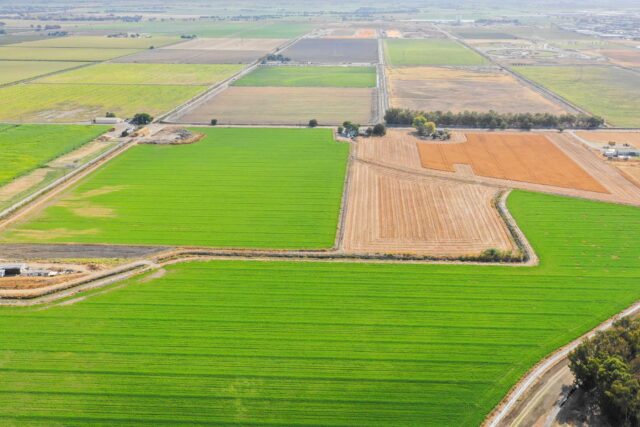
Commentary: Can San Joaquin Valley Agriculture Survive with Less Irrigation? Here Are Ways To Do It
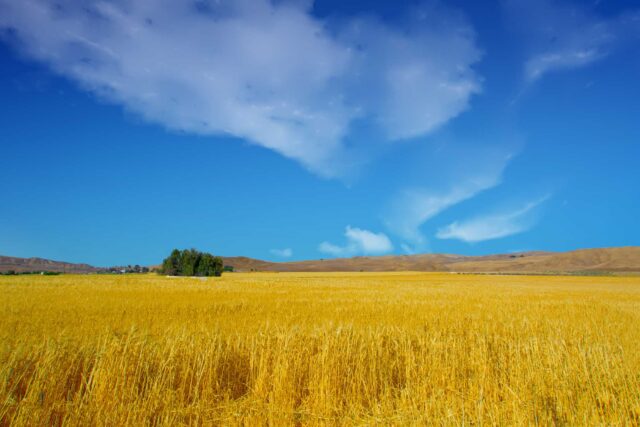
Commentary: Drought Requires New Strategies for Managing Cropland
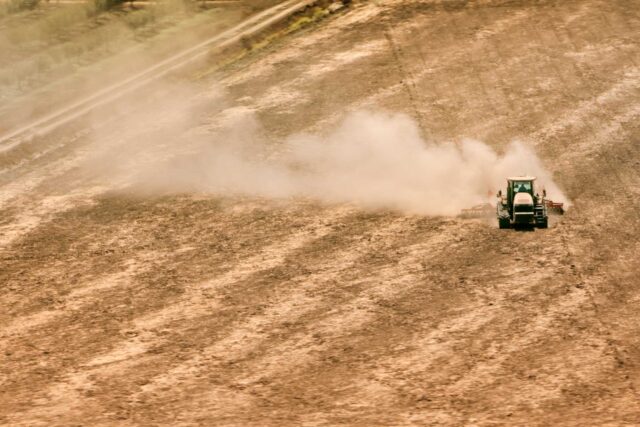
Commentary: San Joaquin Valley’s Next Big Air Pollution Threat—Blowing Dust from Fallowed Farmland
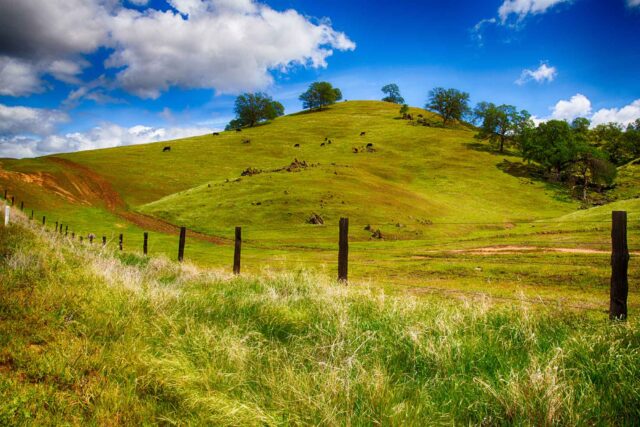
Could Rangeland Return to the Central Valley?
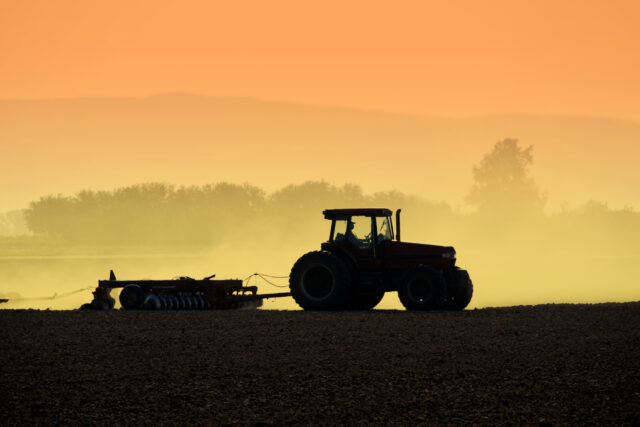
Dangers Lurk in the San Joaquin Valley’s Dust
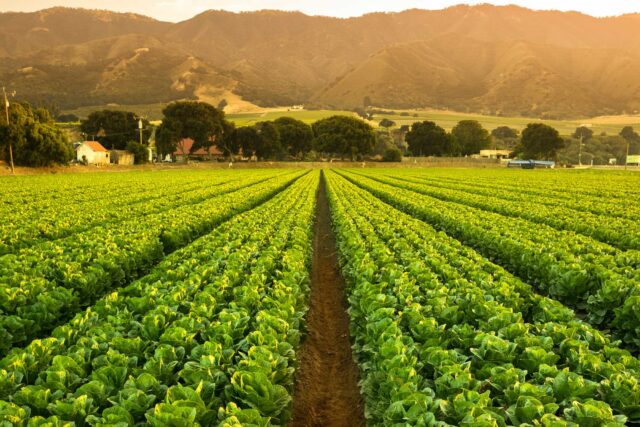
Is SGMA Compatible with Farmland Preservation?

Land Transitions and Dust in the San Joaquin Valley
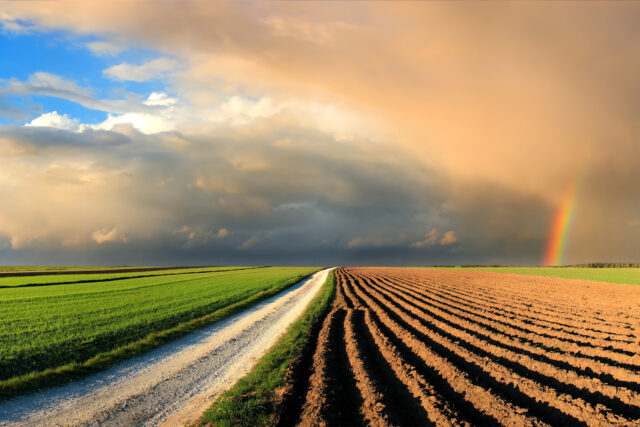
Priorities for California’s Water
